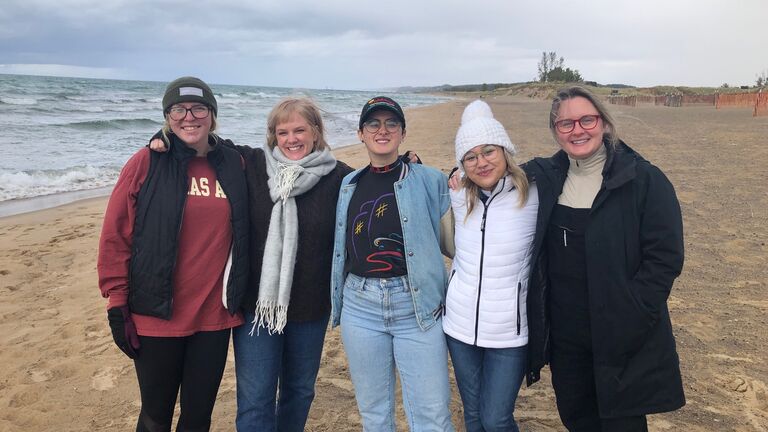
Charlie Pipal
Historic Preservation Department Awarded First Place at Holland Prize Competition
The Holland Prize is a single-sheet competition that “recognizes the best single-sheet measured drawing of a historic building, structure or site prepared to the standards of the National Park Service's Heritage Documentation Programs.” Additions to the Historic American Building Survey (HABS) and the Historic American Engineering Record (HAER) collections are not required to fit on only one sheet; however some documentations are best represented in a condensed format, and are thus eligible for the Holland Prize. Participants in the Holland Prize competition are judged on drafting, composition, depiction of significant features, field records, and dimensioning and annotation of the drawings, and the winning drawing receives a certificate of recognition and publication in the online newsletter of the American Institute of Architects' Historic Resources Committee, Preservation Architect.
The HABS/HAER collections are maintained by the National Parks Service at the Library of Congress in Washington DC. The HABS/HAER program was originally established in 1933 during the Great Depression to provide jobs “documenting America’s antique buildings” for out of work architects. The program offered a way to record and preserve America’s built environment through measured drawings, large-format photographs, and written histories. As the program grew, it became a repository to “document achievements in architecture, engineering, and landscape design in the United States and its territories through a comprehensive range of building types, engineering technologies, and landscapes.” At this time, most of the submissions have been digitized and are available to the public on the Library of Congress website.
Today the collection is used to record historic resources prior to their demolition, collect documentation of buildings as a condition of a section 106 review, or to document important local buildings that might otherwise not be represented. While the collection creates its own documentation each year, anyone who completes a full building documentation is encouraged to submit their product for review and possible inclusion into the collection. Many students in architecture, history, and historic preservation programs create submissions for the collections, as well as participate in the yearly competitions, such as the Holland Prize.
The School of the Art Institute of Chicago's Historic Preservation Department submits two HABS documentations of deteriorating historic resources to the Library of Congress each year in Professor Charles Pipal’s Physical Documentation Studio. The first year cohort in the 2022-2023 school year, consisting of Shelbye Doyen, Chanen Hanson, Laura Hershner, Victoria Hill, and Sol Sherer-Estevez, documented the Illinois State Beach Bathhouse, created hand drawings of the elevations and plans, and arranged a single documentation sheet.
SEE: The Historic Preservation Department's Illinois State Beach Bathhouse documentation
The Illinois State Beach Bathhouse, located in Zion, Illinois near the Illinois/Wisconsin border, was constructed in 1961 of cast-in-place concrete barrel vaults and concrete masonry units to be used as a public service building, with locker rooms, toilets, exterior showers, and a concession stand. The architects, Barancik, Conte & Associates, designed this building, along with several others in the Illinois Beach State Park, in the mid-century modernist style. The interior plan consists of two equal locker room and toilet facilities separated by a concession stand. A privacy screen/honeycomb pattern of concrete masonry units separates indoor and outdoor public spaces, emphasizing the changing rooms entrances, while still maintaining privacy. Although the building is unmaintained and steadily deteriorating, it retains a high level of historic integrity and appears similar to its original design. This bathhouse is now decommissioned, boarded up, and has been placed on the Illinois Department of Natural Resources demolition budget.
The team submitted this project for both inclusion into the HABS/HAER collection and for consideration in the Holland Prize competition and was awarded the 2023 first place prize.
